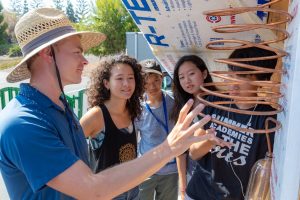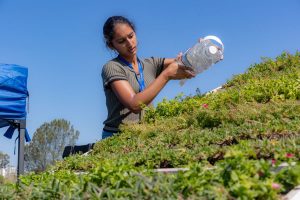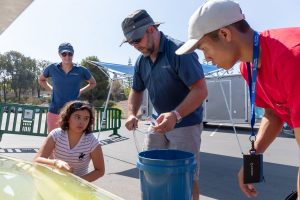Instructors:
Dr. Joel Lanning, Civil and Environmental Engineering, UCI
Dr. Garrett Struckhoff, Environmental Engineering, CSUF
Prerequisites: Algebra I/Mathematics I and Geometry/Mathematics II. One physics class will be helpful but is not required.
Course Description:
Civil and environmental engineers play a pivotal role in creating and maintaining the infrastructure that supports our daily lives, including buildings, transportation systems, and energy networks. Unfortunately, the United States faces significant infrastructure problems, such as aging bridges, a drastic lack of housing, and energy-inefficient buildings and construction practices.
In the Sustainable Infrastructure and Structural Engineering cluster, students will gain insight into the world of civil and structural engineering with a focus on sustainable buildings and infrastructure. This cluster is designed to introduce students to the principles and practices of civil and structural engineering together with fundamental concepts in sustainability in construction. Students will explore the current state of infrastructure in the U.S., abroad, and in developing economies. Their research projects will center around ideating bold innovative solutions to identified problems or inefficiencies in the infrastructure that is responsible for our modern lifestyle.
This hands-on cluster will provide students with practical engineering design/build experience and a deeper understanding of sustainable infrastructure development. The goal is to develop their intuitive feeling for structures and a sense of what materials and practices are the most sustainable. By combining classroom learning with real-world applications, students will be motivated to play a vital role in shaping a more resilient, environmentally conscious, and efficient infrastructure for the future.
The core topics in this cluster are:
- Structural Engineering Basics: Students will acquire a solid foundation in the basics of structural engineering, understanding key principles and concepts that form the backbone of building and bridge design.
- Hands-On Building: Students will have the opportunity to build small and large-scale structures to gain skills using basic construction tools. This practical aspect of the cluster aims to reinforce the structural engineering concepts and to develop students’ ability to physically make the things they design on paper. Further, many students lack useful large motor skills required to use basic hand tools (e.g. hammer, drill, saw, etc). This important life skill will serve students throughout their careers by having better insight into how difficult it is to actually build something. Also, these skills will pay off in day-to-day life promoting their ability to fix or make things themselves.
- Engineering Drawing Skills: The cluster will emphasize the importance of effective engineering drawings from sketching to CAD. Students will gain valuable experience in this crucial skill for technical communication.
Sustainability in Structural Engineering: A significant focus of the program will be on sustainability within structural engineering and the broader building industry. Students learn about the various pros and cons of common civil engineering materials and construction methods. Learning about these design principles will uniquely position students to help minimize the environmental impact of the things they may design in the future (hopefully as engineers!).


